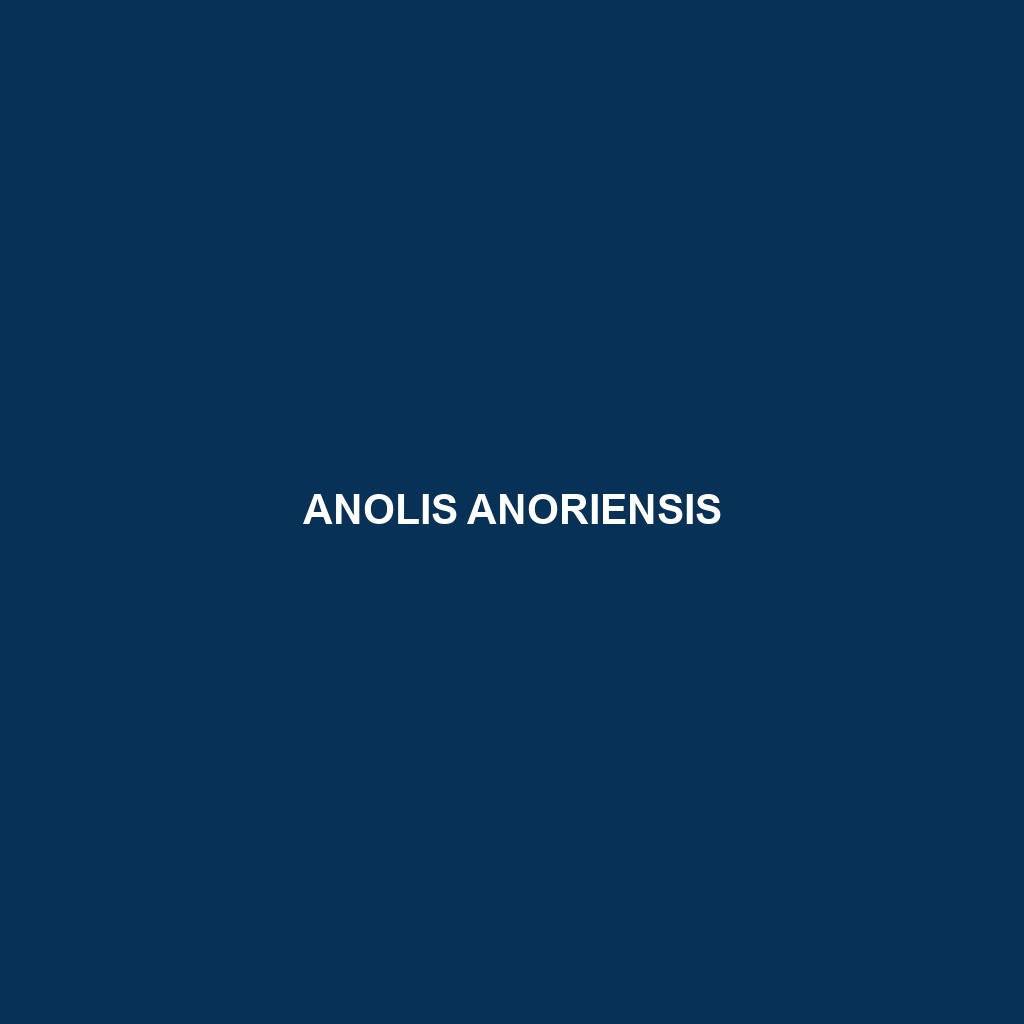Species Description of Anolis anoriensis
Common Name: Anolis anoriensis
Scientific Name: Anolis anoriensis
Habitat
Anolis anoriensis is primarily found in the tropical rainforests of the Andes Mountains, particularly within Colombia and Ecuador. This species thrives in humid, arboreal environments, often residing in the understory foliage of forested areas where it can camouflage effectively against predators. Such habitats offer a rich diversity of insects and other food sources, critical for its survival.
Physical Characteristics
This distinctive lizard measures approximately 7 to 10 centimeters in length. Anolis anoriensis exhibits a range of colors, typically featuring green to brown hues that aid in its camouflage among leaves and branches. It possesses a slender body with a long tail, contributing to its agility among trees. A unique characteristic of this species includes the pronounced dewlap found in males, which plays a significant role in territorial displays and mating rituals.
Behavior
Anolis anoriensis is known for its territorial and aggressive behavior, particularly during the mating season. Males will perform elaborate displays, including push-ups and displaying their colorful dewlaps to attract females and deter rival males. This lizard is diurnal, exhibiting increased activity levels during daylight hours, which allows it to bask in sunlight and forage for food effectively.
Diet
The diet of Anolis anoriensis primarily consists of small insects, including crickets, spiders, and flies. They are adept at capturing prey through quick movements and their excellent climbing skills, allowing them to hunt from various foliage levels. This insectivorous diet is crucial for their growth and reproductive health, as it provides necessary nutrients.
Reproduction
Breeding typically occurs during the wet season, with males engaging in courtship displays to attract females. After successful mating, females lay one or two eggs in moist soil or leaf litter, which incubate for several weeks before hatching. This lizard species exhibits relatively low parental care, as the hatchlings are independent from birth.
Conservation Status
As of the latest assessments, Anolis anoriensis is considered vulnerable due to habitat loss caused by deforestation and land conversion for agriculture. Conservation efforts are necessary to preserve its natural habitat and ensure the species’ survival.
Interesting Facts
Anolis anoriensis is often regarded as a “poor man’s chameleon” due to its remarkable ability to change colors slightly in response to its environment. Additionally, this species has been the subject of various ecological studies, contributing to our understanding of adaptive behaviors in reptiles.
Role in Ecosystem
Anolis anoriensis plays a vital role in its ecosystem as both predator and prey. By controlling insect populations, it helps maintain ecological balance. Furthermore, it serves as a food source for larger predators, thereby contributing to the overall food web dynamics in its tropical forest habitat.
